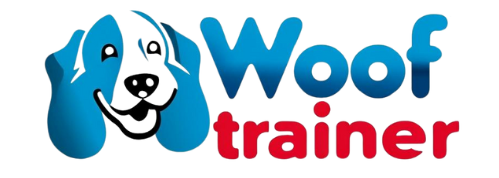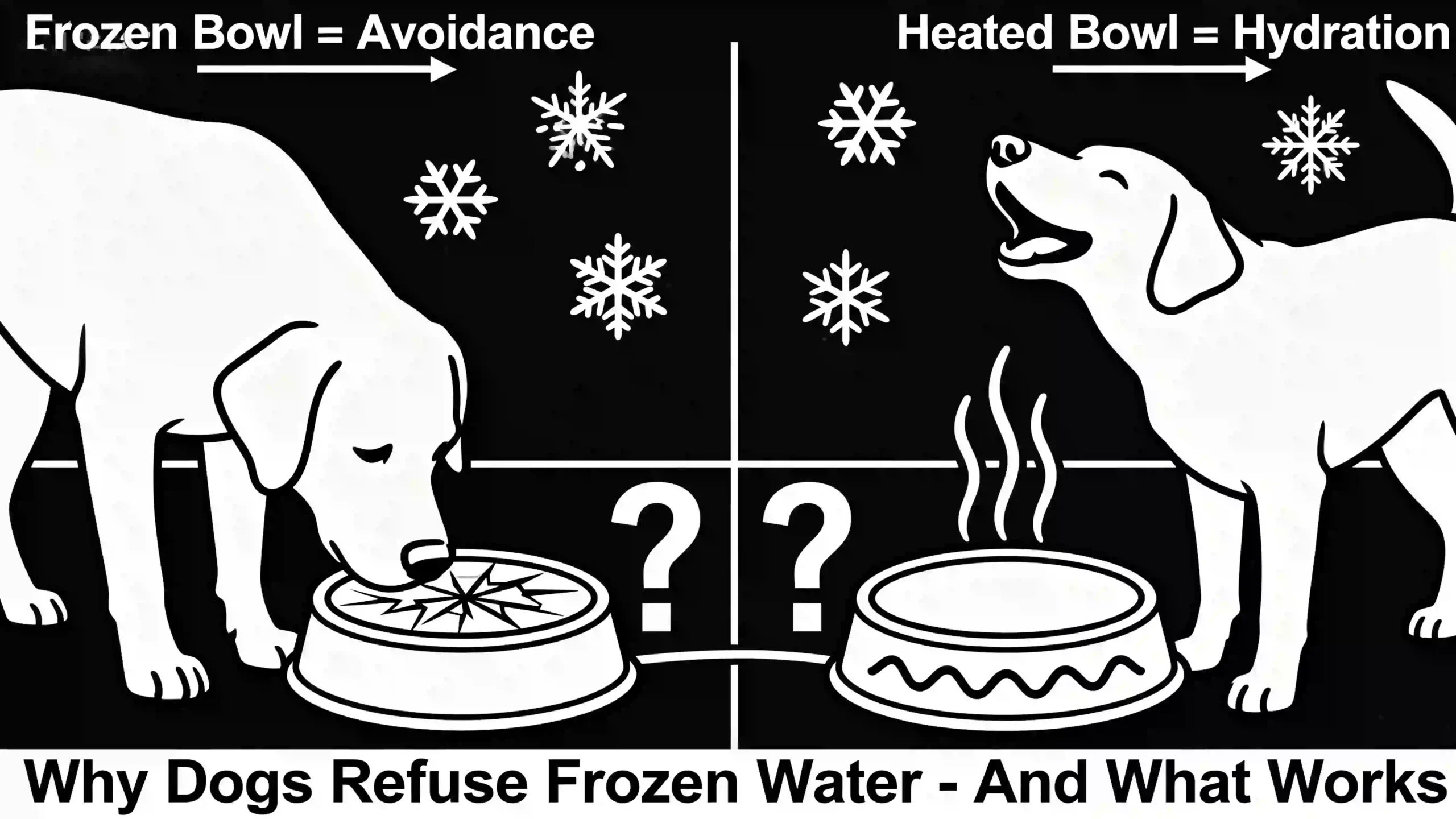You live in a place where winter hits hard. Temperatures drop well below freezing, outdoor water bowls ice over fast, and you’ve noticed your Labrador, Husky, or Shepherd avoiding the bowl altogether. You worry about dog dehydration, about being up multiple times a day to break ice. You’re looking for convenience, durability, peace of mind. Let’s break this down.
What’s Going On: The Problem with Frozen Dog Water
- Frozen surface = no access. When the water bowl freezes on top, your dog can’t reach liquid water. Even partial freezing (a crusty layer of ice) often discourages drinking.
- Uncomfortable sensation. Drinking ice-cold water or biting at slush can be unpleasant, especially for dogs with sensitive teeth or gums.
- Behavioral avoidance. After a few failed attempts, some dogs simply give up on that bowl, preferring snow or skipping water entirely.
- Increased risk of dehydration. Winter air is dry, indoor heating removes humidity, and dogs still lose fluids through respiration. Without consistent water access, dog dehydration is just as likely in January as in July.
Dog Winter Care: Practical Steps Before Upgrading Your Bowl
Before jumping into equipment, try these quick fixes:
- Relocate the bowl. Place it in a sheltered spot away from wind gusts.
- Choose materials wisely. Insulated plastic or ceramic bowls slow freezing compared to thin metal.
- Refill often. Adding fresh, lukewarm water multiple times a day helps—though it gets tedious.
- Add mild flavor. A splash of low-sodium broth can encourage reluctant drinkers.
- Monitor hydration signs. Check gums and skin elasticity daily.
These tactics help, but if your winters are consistently below freezing, a heated solution is usually necessary.
Heated Dog Bowl: The Game-Changer for Winter Water Solutions
A heated dog bowl keeps water accessible, reduces the chore of constant refills, and provides peace of mind when you can’t monitor the bowl every few hours.
What to Look for
- Durability. Snow, ice, and dogs roughhousing demand sturdy build quality.
- Safe voltage. Low-voltage systems reduce shock risks outdoors.
- Heating consistency. A good bowl maintains liquid water even at –20 °C.
- Cord protection. Look for chew-resistant wraps and stable, tip-proof bases.
- Easy cleaning. Food-grade stainless steel or heavy-duty plastic simplifies upkeep.
If you’d like to dive deeper into how the technology works, check out The Science of Heated Dog Bowls: How They Prevent Ice Build-Up.
Meet the WoofTrainer Heated Dog Bowl
The WoofTrainer Heated Dog Bowl is a strong fit for suburban and rural families dealing with harsh winters. Made from food-grade 18/8 stainless steel (30 cm x 10 cm), it’s built to last and easy to sanitize. Unlike high-voltage alternatives, it runs on a 24 V low-voltage supply, making it safer around snow and wet environments.
Its 50 W heating element keeps water between 0 °C and 20 °C, even at –20 °C outdoors. The chew-resistant stainless-steel cord wrap prevents accidents, while the rubber base keeps the bowl stable. Families often use it not just for dogs, but also for livestock needing unfrozen water.
How Heated Bowls Prevent Frozen Dog Water & Support Dog Hydration
- Always-liquid access. Your dog won’t have to paw at ice or give up.
- Encourages regular drinking. Especially important for high-energy breeds like Labs and Huskies.
- Saves you time. No more breaking ice three times a day.
For multi-dog households or kennels, breeders consistently report that heated bowls cut down on labor dramatically. That’s why guides like Why Heated Water Bowls Are a Breeder’s Best Friend in Winter recommend them as essential winter gear.
Safety & Use Tips
- Always plug into a GFCI outlet to minimize risk.
- Place the bowl on level ground to avoid tipping.
- Inspect cords regularly for wear.
- Clean bowls daily to prevent bacteria buildup.
Before using any electric device outdoors, it’s smart to review Safety Tips for Using Electric Heated Dog Bowls Outdoors.
When to Call the Vet
If your dog refuses water for 24 hours, or shows signs like sunken eyes, dry gums, or lethargy, consult your veterinarian immediately. Sometimes medical issues (dental pain, kidney disease) are the real reason behind drinking refusal.
Summary
When you see frozen dog water, you see a problem: dehydration risk, inconvenience, and frustration. Heated bowls offer the practical, safe, moderately priced solution that middle-class families in cold climates need. The WoofTrainer Heated Dog Bowl, with its low-voltage system, durable design, and proven performance, helps ensure your dog stays hydrated all winter long—without you constantly breaking ice.
FAQs
1. Are heated bowls expensive to run all winter?
Not really. A 50 W unit costs only a few cents per day in most regions.
2. Is a low-voltage heated bowl safer outdoors?
Yes. A 24 V system significantly lowers electrical risk compared to high-voltage models.
3. Do dogs still eat snow if liquid water is available?
Some do, but snow is no substitute for proper hydration.
4. How often should I clean the bowl?
Daily rinses and weekly scrubbing keep water safe and fresh.
5. Can heated bowls be used for other animals?
Absolutely—livestock, barn cats, and outdoor pets all benefit from unfrozen water.


